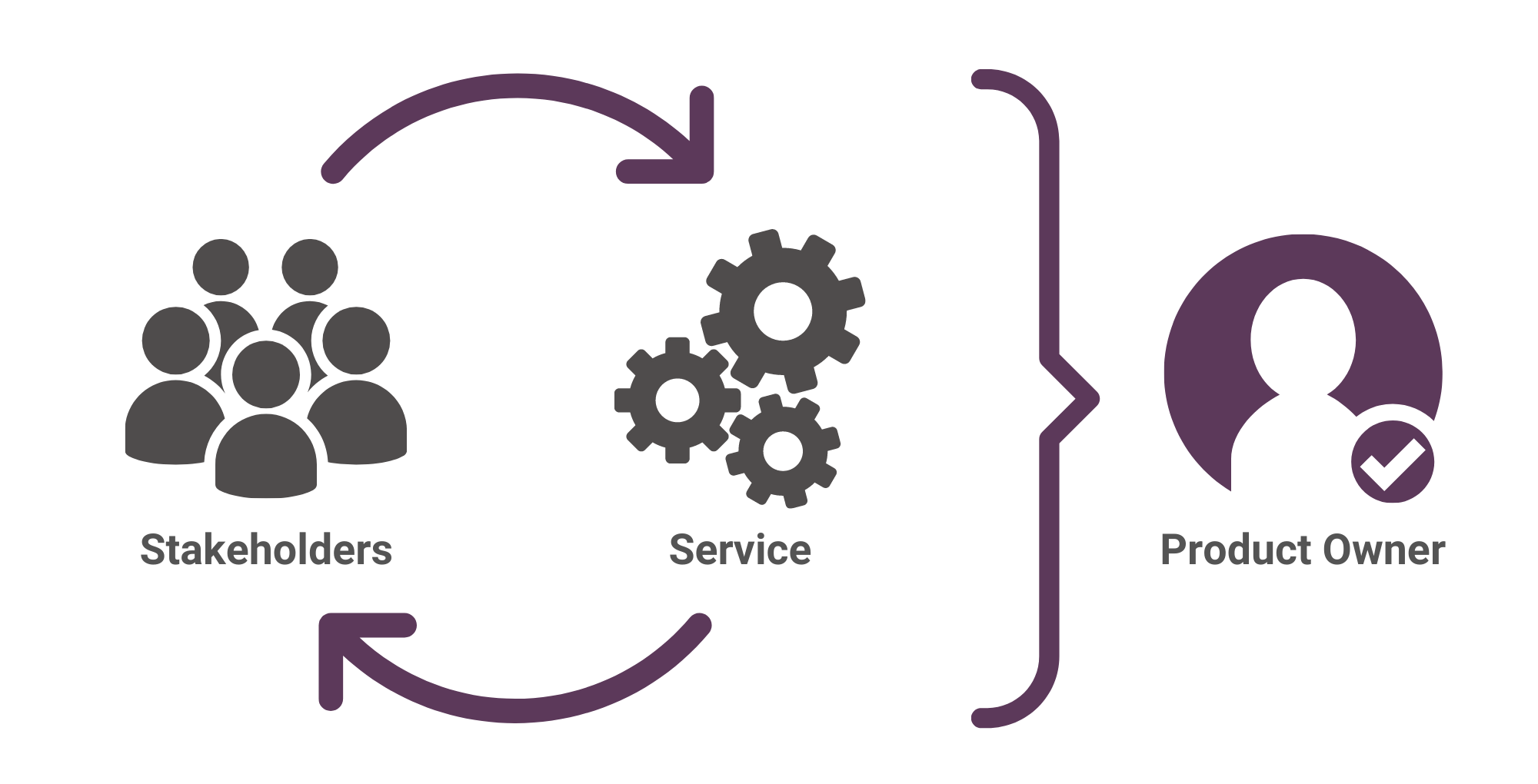Purpose
The purpose of an empowered government product owner is to make sure that a government service or program is effective and meets people’s needs.
“There must be a single product owner who has the authority and responsibility to assign tasks and work elements; make business, product, and technical decisions; and be accountable for the success or failure of the overall service. This product owner is ultimately responsible for how well the service meets the needs of its users, which is how a service should be evaluated.”
Cross-departmental authority
A government product owner is responsible for the effectiveness of the full experience of a product or service, not just a part of it. They consider feedback from external and internal users. They weigh the impact of changes against the costs and determine what improvements are necessary.
Product owners are not part of the traditional departmental hierarchy. They are fully empowered to make decisions to improve the service.
This means:
- Departments that are part of the service report to the product owner and
- Leadership supports their decision-making authority
Product feedback loop
The government product owner manages feedback from elected officials, the community, departments, and management. They listen to these four stakeholder groups, balance their needs, and improve the user experience of the service.

Examples
Parking tickets
For example, consider parking tickets and the product owner is someone in the parking division. Other departments such as finance, public works, or the police play roles in the process.
The product owner determines a step within the police department could be more efficient. As a product owner, they have the responsibility and the authority to assign tasks to make this improvement happen.
Community inquiries
Another example is the system and process for responding to questions, input, and requests from the public. All departments perform this in some way. The product owner for the system might be someone in a central administration department or communications. They track how well the system works and direct improvements to how people use it.
The product owner drives improvements and informs how departments use the system. They also ensure cross-departmental collaboration with the system. Other responsibilities might include onboarding new users, training, and success metrics.
Balancing and responding to feedback
Government product owners often work within hierarchies and between strong-willed personalities. Their hardest role is balancing competing feedback between stakeholders.
It’s not the job of the product owner to make every suggested change. They collect feedback, analyze it, and make changes based on data and best practices. Feedback is considered, not blindly followed. Not all feedback makes sense, especially in combination with other changes.
In this environment, it’s important to use data to drive decisions and clearly explain decisions. Management must understand and support the product owner’s authority. When conflicts arise, the product owner should have a clear process for resolution.
Do’s and Don’ts
Do
- Assign a product owner for every service.
- Communicate the product owner’s role, responsibilities, and authority to internal users and stakeholders of a service.
- Create a clear process for a product owner to resolve conflicts.
Don’t
- Expect a service without a product owner to work well.
- Allow strong-willed personalities or hierarchies to overrule data-driven decisions.
Checklist
- A product owner has been identified.
- All stakeholders agree that the product owner has the authority to direct improvements and make decisions.
- The product owner has support and training to assess alternatives and weigh tradeoffs.
Key questions
- Who is the product owner?
- What organizational changes have been made so the product owner has authority over and support?
- What does it take for the product owner to make changes to the service?
